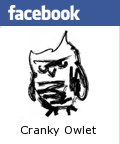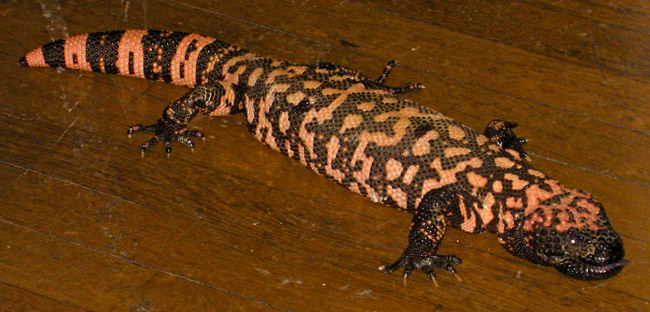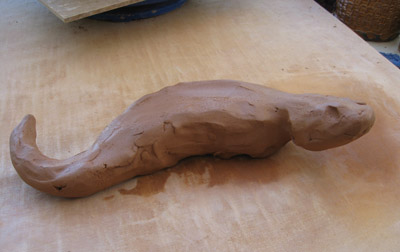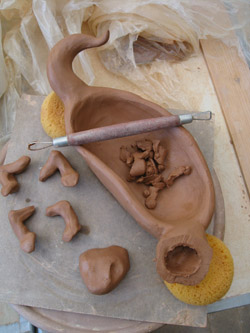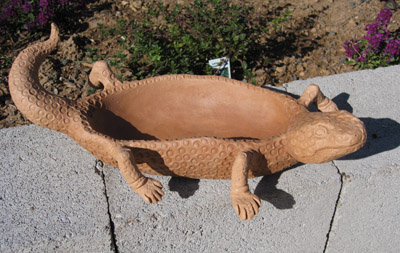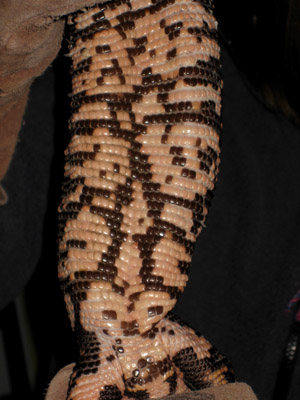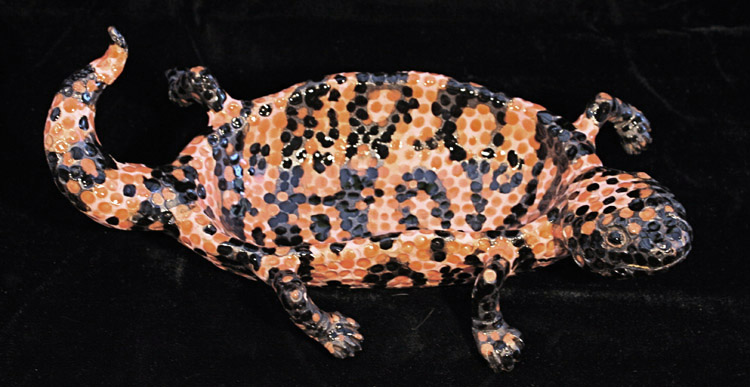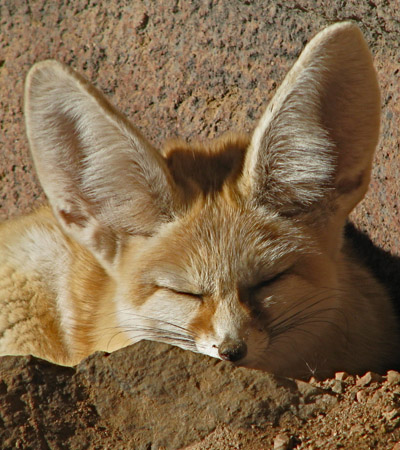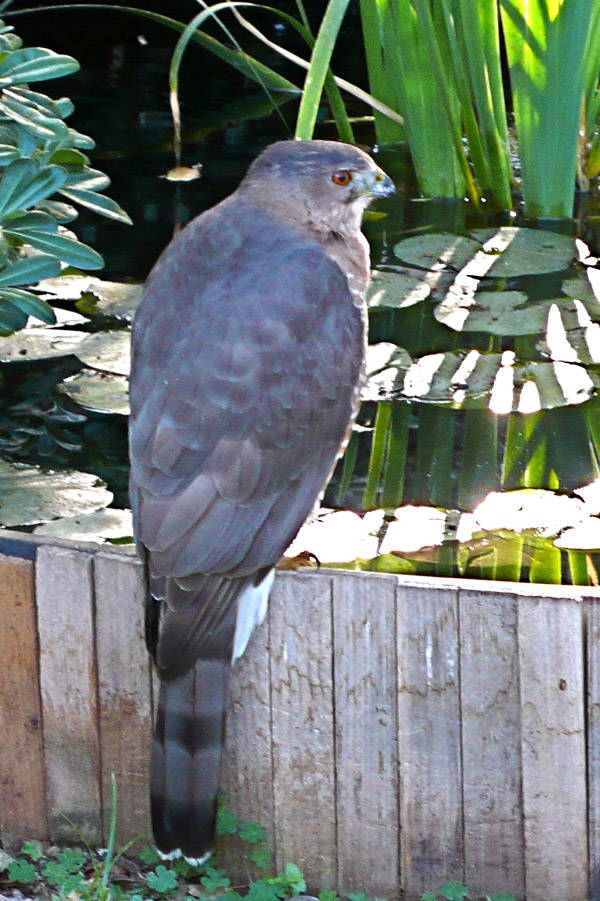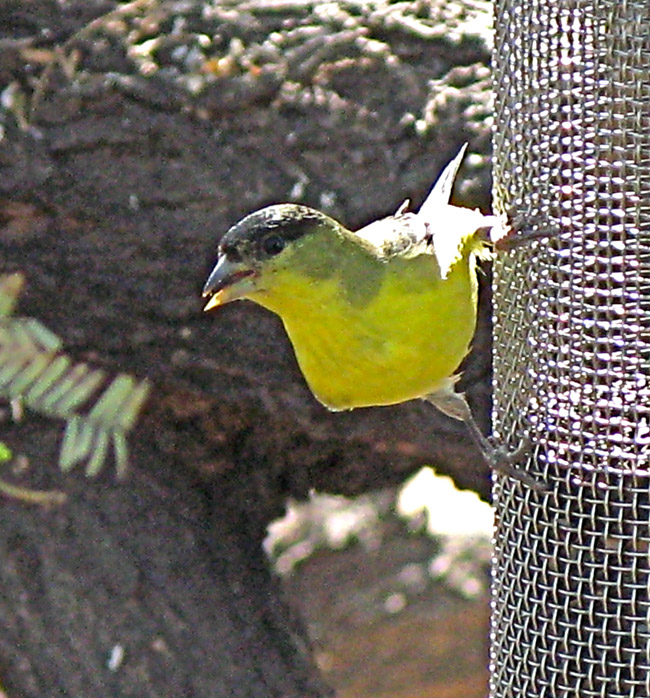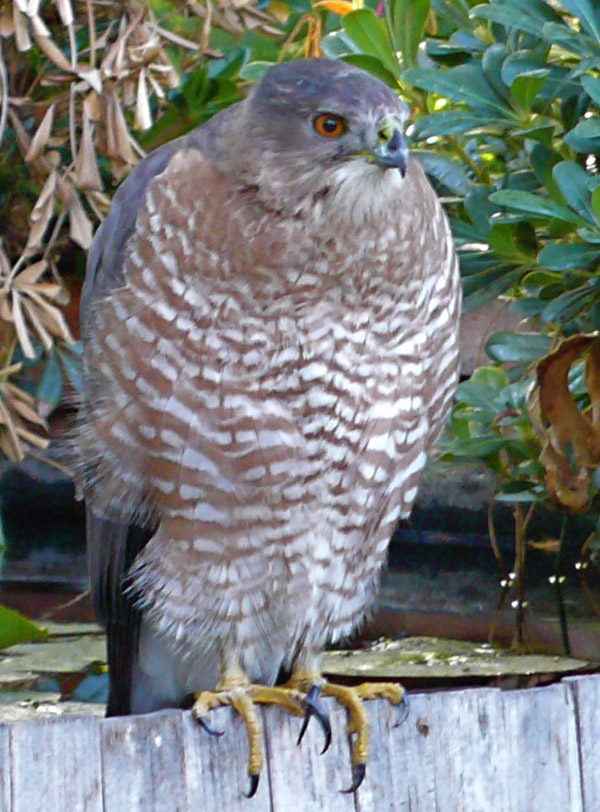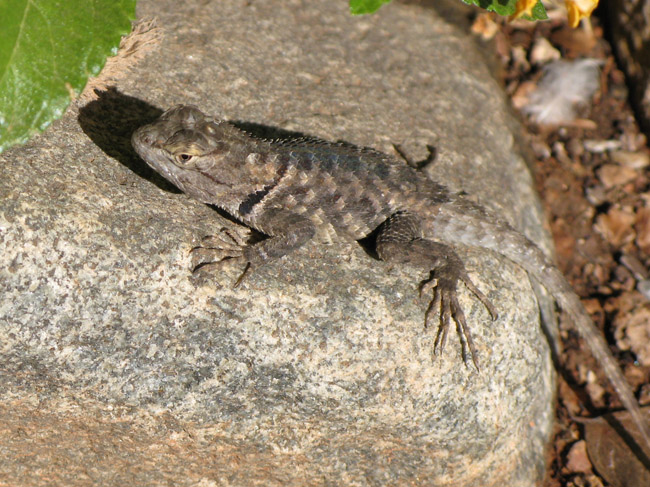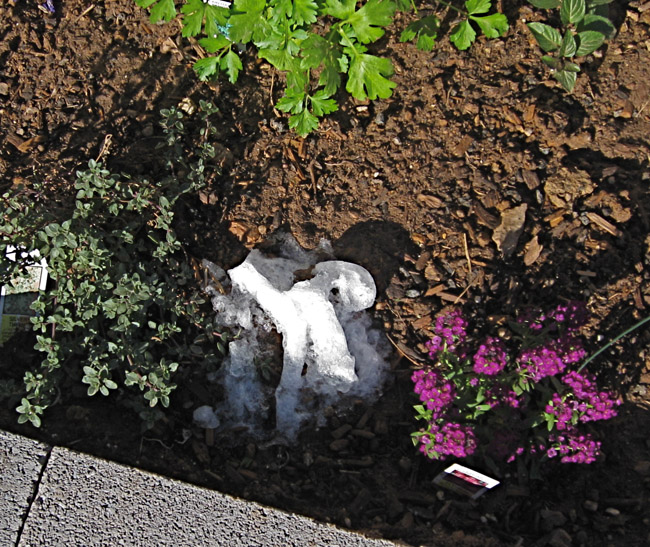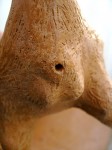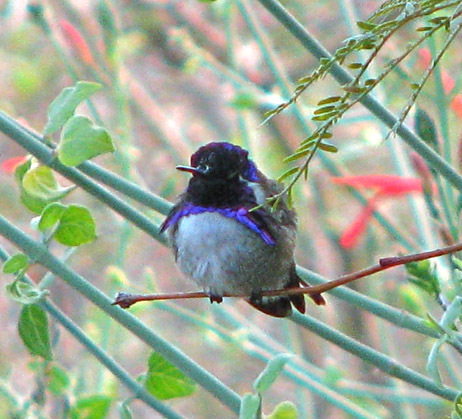Picture of purples past
This is the very week many Costa’s hummingbirds leave our yard. I know this because I’m keeping track, not out of obsessiveness, or possessiveness (well, maybe a little…), but because each winter I participate in the Cornell Laboratory of Ornithology’s Project Feeder Watch. Like Christmas bird counts, it’s a way for science to harness the awesome powers of 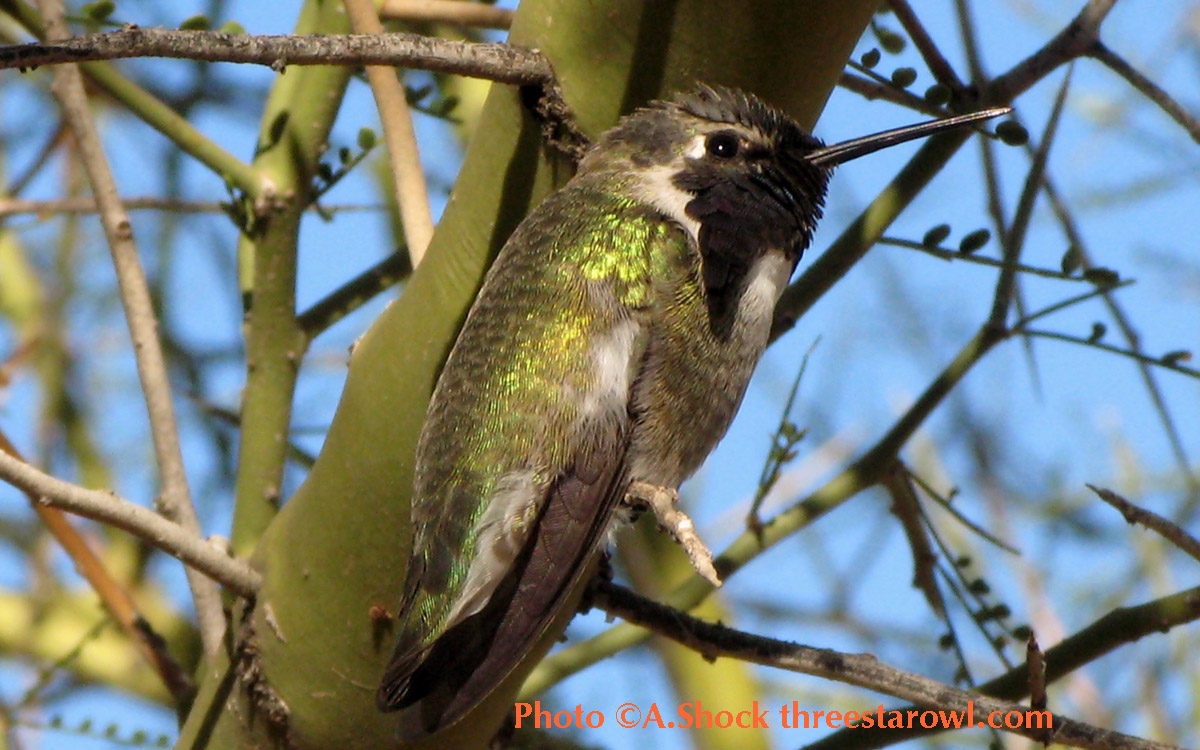 birdnerds and aviphiles across the nation.
birdnerds and aviphiles across the nation.
<< male Costa’s hummer in our Little-leaf palo verde tree. Go ahead and click on it to enlarge — I uploaded a huge image!
So, between November and April, I keep periodic count of birds that come to food sources in our yard: feeders, water features, flowers and plants, and other food sources like bunnies, finches and doves. I report these winter bird censuses to Cornell Lab, and they compile the data into useful charts graphs and figures, which can be accessed by anyone online.
In previous posts, I’ve mentioned how our post-breeding population of Costa’s hummers balloons, with as many as 6 or 8 individuals, both males and females, coming daily to our feeders. The males can be easy to tell apart, as some are young of the year, and are just growing in their flamboyant purple moustaches (properly called gorgets, like the piece of armor which protected the throats of knights, or the swath of cloth beneath the wimple some orders of nun wear), and the new feathers grow in distinctively, for a while enabling us to separate individuals by sight. From July to January, the feeders in our yard are dominated by Costa’s.
But right after the New Year, many of them go away. For instance, Yoyboy and Macho C, fierce contestants for our front porch feeder for months, have just recently moved on. Some individuals do stay year round, and for right now, we still have at least one female coming to the feeders in the back, and at least two males — “C-Dude” and another nameless young of the year male — are still defending prime feeders in the back yard as well. Time will tell if either stays here through summer.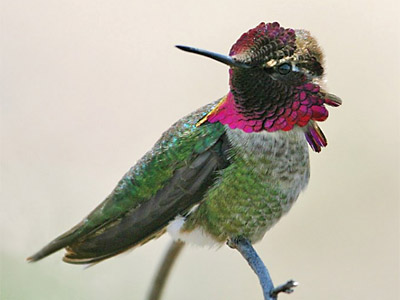
For now, though, the Costa’s numbers are thinning, and the big Anna’s hummers are beginning their courtship cycle.
Anna’s hummer, photo by Will Elder of the National Park Service >>
For the last week, while the rest of the country fogs its glasses in a deep freeze, it’s been warm enough in Phoenix to open up the house, and I can hear the sharp, loud “chip” the Anna’s males accomplish at the bottom of steep, repetitive dives. The sound has recently been discovered to be made by air rippling tail feathers as they descend, and it takes practice before the birds can make the noise consistently. Little bullroarers, they swoop down on a female from high in the air, and chip just as they pass over her head in a millisecond, like miniature fighter planes at an airshow buzzing the crowd. They’re just as fuel consumptive — I have to fill the nectar feeders twice a week or more.
So beginning now, my Feederwatch counts will have more Anna’s than Costa’s, until next year when the proportions are reversed again. The next hummer change? Around the first week of March, when the Black-chinned hummers fly in from their wintering grounds, and zip around the yard with their zizzing flight sound, dipping at the nectar sources alongside the Anna’s and resident Costa’s.
(This is Three Star Owl post #200!)
